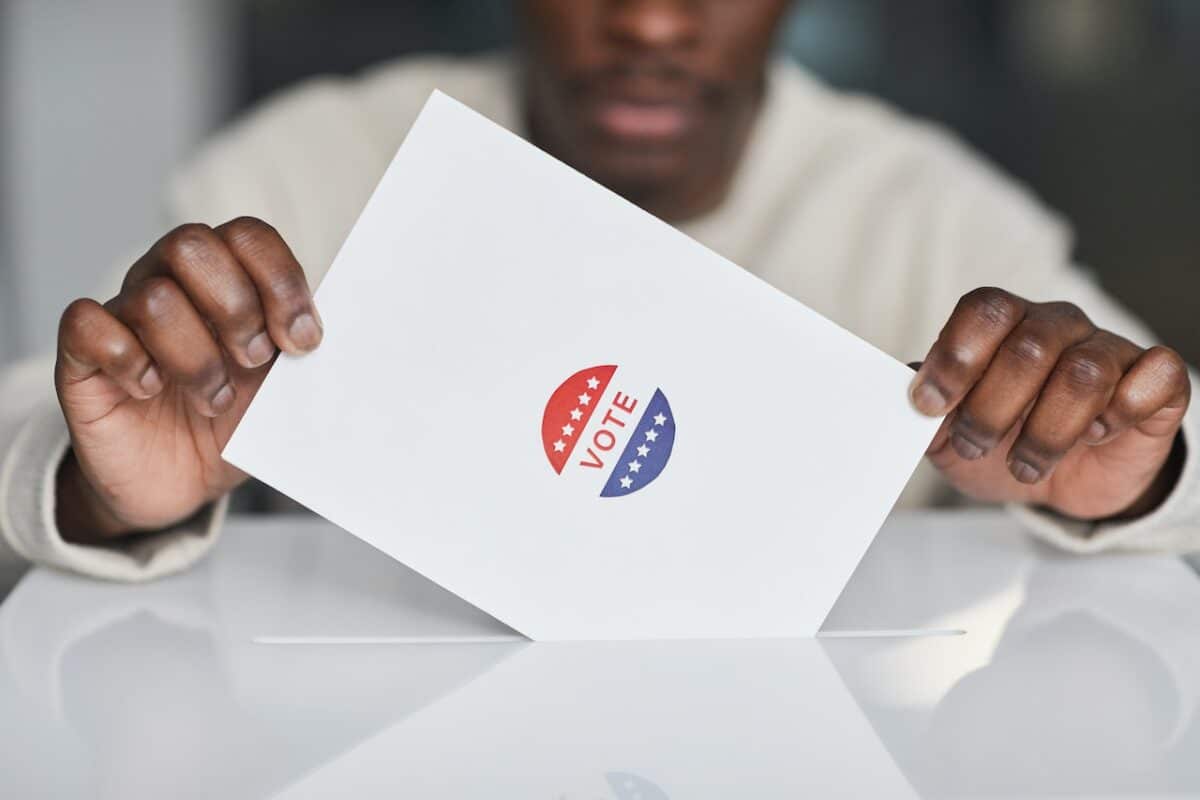An Editorial by Sheila Ferguson
Many African Americans are proud that their ancestors forged the Civil Rights movement. They stood up and risked life and limb to afford themselves and their descendants the right to vote. Historically, it has always been a fight against voter suppression and racial and economic discrimination. In these years of grievance politics, all Americans must be vigilant about local and national efforts to rob citizens of their fundamental rights and access to the ballot box.
Over four hundred anti-voter bills have recently been introduced in forty-eight states. These bills have sought to create unnecessary roadblocks for people to register to vote. Democracy is all about participation and allowing the voices of the American people as eligible voters to be heard. Vote to impact your community and the nation positively. Vote because many social issues are affected by elections, including (but not limited to) gay marriage, reproductive rights, health care, sports participation, gender-affirming care, environmental issues, public education, etc. Social issues affect everyone in one way or another.
According to scholar and griot [i.e., historian or storyteller] Dr. Russell Booker of America’s Black Holocaust Museum (in Milwaukee, Wisconsin), America has a long history of threats and intimidation against Blacks and poor White southern voters from the Jim Crow era until now. Booker notes that the historical voter suppression tactics included:
- Literacy tests proving the ability to read
- Property test indicating that only property owners could vote
- A grandfather clause which stated that people who could not read or did not own property could vote if their grandfathers voted before 1867
- All white primary elections strategy where Republicans ran first against Republicans and Democrats against Democrats, ending with the Republican winner running against the Democratic winner—Note: Blacks were not allowed to vote Democrat
- Locally purging the names of Black voters from the official lists of voters
- Not allowing former prisoners to vote
- Demands for government IDs like driver’s licenses, special photo IDs, birth certificates, and
- Denying the homeless the ability to vote.
Today’s modern voter suppression tactics being implemented across the nation are much the same, and include:
- Felony Disenfranchisement blocks those with incarceration histories
- Redistricting and Gerrymandering
- Voter Purges, and
- Voter ID Laws.
Today the fundamental aim of voter suppression across the U.S. is to ensure that chosen GOP candidates win reelection, no matter what the voters say. Looking at recent Ohio history dating back to 2018, there have been a series of efforts to make voter suppression into law. In a 5-4 ruling in 2018, the U.S. Supreme Court gave Ohio a victory in a fight over the state’s method for removing people from the voter rolls. Nationally, this is a practice that civil rights groups say discourages and negatively impacts minority turnout.
In 2021, like other anti-voting bills introduced across the U.S. by the GOP, Ohio’s House Bill 294 severely restricted access to ballot drop boxes and absentee voting. The Ohio House Bill sought to limit the number of drop boxes to just one location per county, and that location can have up to three drop boxes. It would also allow drop boxes to be used only in the ten days leading up to Election Day, a considerable decrease from last year when Ohio voters had 30 days to return their ballot via drop box. Those boxes would also only be allowed outside the county Board of Elections offices, hindering voters who do not live near the offices and do not have easy access to transportation. Such voters would have to find other ways to return their ballots.
In addition to the drop box changes, the bill imposed new restrictions on voter registrations and absentee voting, including limiting what kind of mail-in ballots can be “cured”—the process of fixing small mistakes voters made on their ballots so that the votes can count. HB 294 would also move the absentee ballot request deadline up seven days and eliminate in-person absentee voting on the Monday before Election Day. Additionally, the bill would cut early voting hours, require two forms of voter ID, and limit the existing ability of the Ohio secretary of state to prepay postage on election mail. Like similar bills across the country, HB 294 aimed to disproportionately affect Black and Brown voters, students, low-income residents, disabled people, active-duty military, and seniors.
In 2023, an Ohio House Bill (HB 458) was signed into law by Governor Mike DeWine on Jan. 6. HB 458 was designed to enact a strict photo ID requirement and limit mail-in and in-person early voting. It is the first significant voter suppression law enacted after the 2022 midterms.
In these challenging times, the range of voter suppression efforts demands that responsible citizens vote. Voting is a response to the present-day efforts to take away rights concerning reproductive health, sports participation rights for transgender kids, and access to the factual elements of American history. Stand up and be counted, and do not allow fear or any form of defeatist thinking stop your vote.






